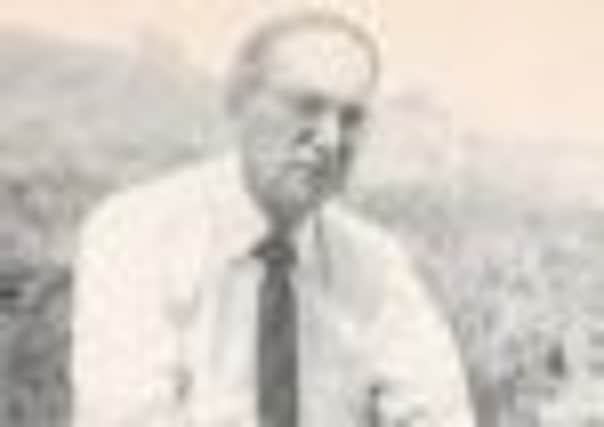Dead but not forgotten... time to revive poet’s reputation


How’s this for a poetic description of one of the kids in your class at school: “Unhealthily pale as if he were grown indoors/or underneath a brick that excluded the sun” ?
Or this, for a likeness of one of your old teachers: “His fading youth was underlined by wrinkles/and floodlit by the sporty shirts he wore”? Yes, we’ve sat with lads like that in assembly and been taught by the bloke who “maintained his ideals in a mild-mannered way/that only invited opposition”.
Advertisement
Hide AdAdvertisement
Hide AdThose exact and lyrical descriptions are from poems by Stanley Cook, one of Yorkshire’s unsung writers who died 20 years ago this year and whose reputation is well-worth reviving in preparation for the 90th anniversary of his birth next year.
Cook was born in Austerfield in the flatlands near Doncaster in 1922, and lived a quiet and unremarkable life, going to Doncaster Grammar School then to Oxford and a career teaching in secondary schools and lecturing at what was then Huddersfield Polytechnic.
However, he produced a remarkable body of work that should give him a place in the Yorkshire Poetic Hall of Fame somewhere between Ted Hughes and Simon Armitage, between the nature poet and the sharp observer of human frailty and majesty.
Many years ago, I went to interview Stanley Cook at his house for a now-defunct literary magazine. I was nervous at meeting the great man, a poet whose work I admired and who had sent kind and thoughtful rejection slips or elegant acceptances when I submitted examples of my own verse to him in his role as editor of Poetry Nottingham magazine.
Advertisement
Hide AdAdvertisement
Hide AdI knocked on his door in Sheffield and he answered straight away, as though he’d been waiting for me. I was sweating and flustered, having got off the bus a couple of stops too early and marched briskly to his house.
He took my coat and held it up. “I’ll put in the wardrobe,” he said, and he put it in one that just happened to be at the bottom of the stairs. Then he locked the wardrobe door and put the key in his pocket. “You’re not in Barnsley now,” he said with a twinkle in his eye.
He began to publish in the early 1970s and the poems about the pupil and the teacher I quoted above are from his two excellent pamphlets Form Photograph and Staff Photograph, snapshots of the children he taught and the colleagues he worked alongside. Although they’re sharp and incisive, these poems are never mealy-mouthed or cynical; there’s humanity here, and a kind of love.
Here’s the naughty boy, portrayed with depth and sympathy: “Officially bad, he looks long-suffering and pale/from staying up too late to watch his anti-heroes/ on the telly, skipping breakfast next day/to get to school.” And here’s the teacher who can’t control the class despite (or because of) his wife being an ex-stripper: “He sometimes yelled for quiet/ but couldn’t do a thing about discipline;/ a few more serious boys drew up to his desk/for snatches of education underheard/below the general din.”
Advertisement
Hide AdAdvertisement
Hide AdThose poems are typical of the observation he was so good at; Yorkshire in general and South Yorkshire in particular captured his imagination and he was determined throughout his writing life to try and capture the essence of the landscape and the people.
There’s George the Barber, “Plump, with a fat man’s manual dexterity” and an unforgettable image of Worsborough Dale near Barnsley in winter “cold fixes birds like toys to the boughs”; Crow Edge is illuminated as “…the village that bumps its head/against bad weather high up on the moors” and Grandpa Spencer “a little man with a trowel-shaped face tipped with a silver beard”.
His long poem Woods Beyond a Cornfield, published in 1979, is a masterpiece, I reckon; it’s an examination of a terrible murder in a pastoral setting and a tour-de-force of nature writing that combines description and imagery with a knowledge of history: “Oh for the learned crofters of a century ago/reciting Homer at the plough to the birds who followed!”
Stanley Cook also wrote poems for children but for me Cook’s lasting legacy should be his portrayal of Yorkshire landscape and people and the spaces and connections between the two.
Advertisement
Hide AdAdvertisement
Hide AdIt’s odd that writers can all too often just slip out of the public view once they die; let’s hope that, as anniversaries of Stanley Cook’s birth and death appear on the calendar, he can be remembered.
Stanley Cook’s Collected Poems Woods Beyond a Cornfield is published by Smith/Doorstop, Sheffield.